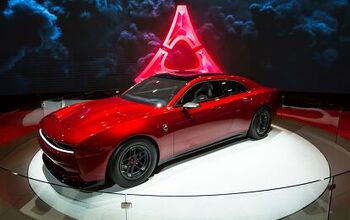"In Many Ways, the Marriage Between the Indian Middle Class and the Automobile Culture Has Been Disastrous."
The NYT’s opinion page has a provocative piece by Siddhartha Deb today. It explores the role that automobiles play in the class dynamics of a modernizing India. Deb writes
Until the mid-1990s, cars had been mainly available in two models in India: the unglamorous, onion-shaped, sturdy Ambassador and the more aerodynamic Maruti 800. Both were produced by state-run companies (though the latter had a partnership with the Japanese company Suzuki). But when India began to open its markets, a wide range of cars became available, just as rising middle-class incomes and cheap consumer credit made buying such cars feasible.
In many ways, the marriage between the Indian middle class and the automobile culture has been disastrous. Roads remain awful, drivers continue to be erratic, and traffic in cities like Delhi and Bangalore is worse than ever. And yet the car has become deeply enmeshed with upward mobility, while also complicating that mobility. In the India of the Ambassador and the Maruti, the distinction was largely between those who owned cars and those who did not. In the India of Ford, Fiat, Hyundai and Mahindra — where there is even a very cheap indigenous model called the Tata Nano — distinctions are parsed in terms of the model one owns.
Drom the Bollywood producer’s suit-matched Bentley Continental to a struggling middle class couple’s divorce over the wife’s aspirations to a red Mitsubishi Pajero, Deb documents the cars, and other forms of transportation, which help define the emerging class order in India. It’s a brief but intriguing glimpse into the social impact of cars in a rapidly-growing economy, and it illustrates how cars both affect and reflect the fabric of social order. Give the whole thing a read if you’ve got a spare minute.
More by Edward Niedermeyer

































Comments
Join the conversation
Yup, welcome to development, India. Aspiration is part of the deal. When people get wealthy enough to go beyond meeting their needs and can start to meet their desires too, then a car is no longer merely a transportation tool. I suspect that this is a big part of the reason why research shows people in wealthy countries aren't any happier than people in middle-income countries. After all, there are always more and greater desires to reach for, so we all shoulder various levels of dissatisfaction. It's what causes us to look at a car whose power, safety, efficiency and quality are far better than what we coveted only 10-20 years ago, and wrinkle our noses disdainfully because the dashboard is styled with too much hard plastic.
This is from the NYT, though. The paper of record for people incapable of conceiving of a world where anything beyond social climbing, status whoring and class warfare might possibly motivate someone. What the shrinks call projection, I guess. In Bangalore, sitting in traffic sucks. But what sucks even more is overcrowded, hot and sweaty public transportation, where at best some of your fellow patrons have discovered toothpaste and soap. Ensconcing yourself in an air conditioned, glass and steel sensory deprivation chamber isn't necessarily all that bad a tradeoff; even if it isn't moving at much of a clip. As for bad roads, isn't that why Tata bought Land Rover?
As an Indian who recently immigrated to the US of A, I wholeheartedly agree with the article. Hell, I am guilty of those very same emotions/ aspirations. My dad has a Maruti Suzuki Alto and boy did I ever want him to 'upgrade' from that car! The association of a owning a car with upward mobility is also the reason why the Nano hasn't as big a success as hoped for. When the lower strata buy a car, they want to show the world that they 'have arrived' and the Nano is NOT the car that can send that message.
“In many ways, the marriage between the [insert place name] middle class and the automobile culture has been disastrous.” This is an NYT article mad lib.